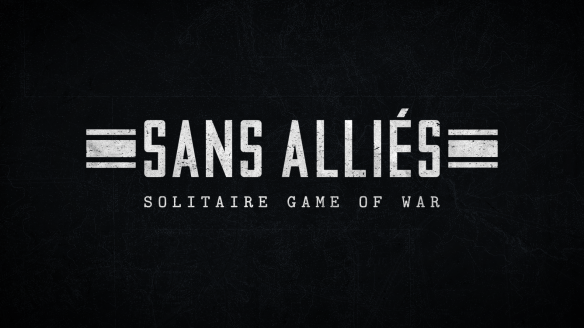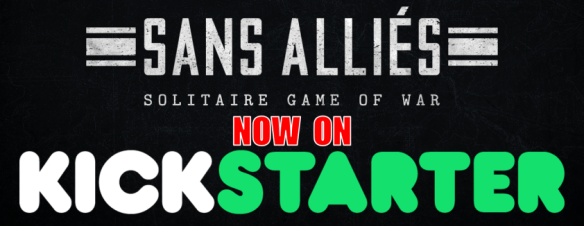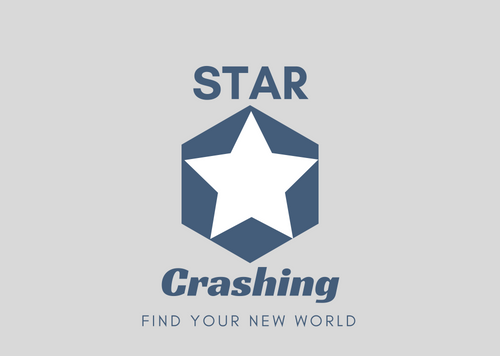- Number of players: 1 (solitaire specific)
- Time required: about 60 min
- Recommended ages: 13+
- Past Go Gaming&Geeking website: pastgo.net
- Kickstarter Preview Page: https://www.kickstarter.com/projects/pastgo/1315731220?token=5af7b54e
- STUDIO1126 website: http://www.studio1126.com/
- Facebook: https://www.facebook.com/pastgogames
- Twitter: https://twitter.com/PastGoGames

Over the last 6 months of blogging, I have been lucky enough to connect with a number of other bloggers who share my passion for board games. Geoffrey Greer, writer of Past Go Gaming & Geeking, has been a big part of that connection. Geoff is a teacher with a passion for history and geeky topics, so he has a ton of great articles about a number of interesting subjects from Monopoly in American Culture to Howard the Duck. Going back the past few months, it’s rare to see a post I’ve made that doesn’t include a like or a comment from Geoff. I have always appreciated his activity on my blog, and the articles he writes are all very cool, so when I heard about his new game I jumped on the chance to try it out. Geoff and his wife Valerie have created a solitaire game called Sans Allies that is currently on Kickstarter. They have also added a prototype online, which I printed out and played over the weekend. Below is a brief description of the game and its rules, as well as a few important points about the game’s strengths and why I think you should back it on Kickstarter!
Sans Allies is a single player game with a very similar style to Pyramid Solitaire. The game has a 20th century war theme and revolves around fighting through enemy lines to capture the Enemy Capital before time runs out. The Enemy Capital is always at the very top of the pyramid, which means that in order to reach it you have to make your way through a number of different types of land, all while trying to build up your own forces and stop the enemy from developing their “ultimate weapon.” The game mechanics seem daunting when you first open up the instructions, but they are quick to pick up as long as you thoroughly read through the rule book before you play and then keep it on hand the first time you try the game. All in all, it only took me about 10-15 minutes to learn the “Limited War” gameplay (simplified rules) and only an additional 5-10 minutes to learn the “Total War” rules (complete rules). The first game I played took about an hour, but once I got the hang of it and was playing at a faster pace I found myself finishing a round in slightly over 45 minutes.
The game feels a lot like a single-player version of Risk to me – in order to “invade” a space and move closer towards the Enemy Capital, you roll two dice and either lose or maintain troops based on the number you rolled. This means that how and when you  dedicate your troops to an invasion is a crucial part of the game. You gain troops each turn, but after every turn the enemy has a chance at improving their ultimate weapon, so you can’t sit around and stockpile troops for too long. Sans Allies is also similar to the game Axis and Allies because there are different types of troops that can be used; you have personnel (ground troops), vehicles (tanks), aircraft (planes), and ships. Each type of territory you try and invade has specific types of troops that can and can’t access it. For example, only aircraft and ships can invade sea territories, and only aircraft and personnel can reach mountain territories.
dedicate your troops to an invasion is a crucial part of the game. You gain troops each turn, but after every turn the enemy has a chance at improving their ultimate weapon, so you can’t sit around and stockpile troops for too long. Sans Allies is also similar to the game Axis and Allies because there are different types of troops that can be used; you have personnel (ground troops), vehicles (tanks), aircraft (planes), and ships. Each type of territory you try and invade has specific types of troops that can and can’t access it. For example, only aircraft and ships can invade sea territories, and only aircraft and personnel can reach mountain territories.
There are plenty of other rules and tactics to the game, but I don’t have the space to go into everything in this post. Instead, here are the main reasons why I believe that Sans Allies is well worth backing on Kickstarter:
- Easy to pick up – I mentioned before that it took me about 20 minutes total to learn the complete rules of the game (both Limited and Total War rules). This may seem like a significant amount of time, but that is mostly because I read through the entire instruction book once and re-read specific chapters before
 trying to play the game. This meant that by the time I actually started playing the Limited War version of the game, I only had to check the rules a few times for my first play through. When I upgraded to Total War for my second play-through, I felt comfortable enough with the Limited War rules that I only checked the rules for Total War additions. Ultimately I’ve played through the game four times in total, and feel like I know pretty much everything I need to play the game moving forward.
trying to play the game. This meant that by the time I actually started playing the Limited War version of the game, I only had to check the rules a few times for my first play through. When I upgraded to Total War for my second play-through, I felt comfortable enough with the Limited War rules that I only checked the rules for Total War additions. Ultimately I’ve played through the game four times in total, and feel like I know pretty much everything I need to play the game moving forward. - Challenging (but not too challenging) Gameplay – I’ve found that game difficulty is a big part of what makes a game good or great. If a game is too simple, it’s boring, but if it’s too complicated nobody will want to play it. Sans Allies found a good balance with its combination of strategy and luck, giving it a feel of a game that isn’t easy but is certainly beatable. I won each game that I played, but there were definitely some rounds that were pretty close and I never felt like the game was “in the bag.”
- Easy to Carry (good travel game) – Speaking of in the bag, since the game is mostly made up of cards and no boards are necessary, it is the perfect game to take on a trip. Whether it’s a family vacation or a work function, sometimes having a game you can play during your travels can be a lifesaver. Most people bring a deck of cards and play solitaire, so why not enhance your experience by bringing a more complex travel-sized game instead?
- Cheap – Large-scale board games are getting more and more expensive as time goes by; most games nowadays cost around $50-$60, and while they are usually worth the price in my opinion it’s difficult to justify buying certain games because of the price tag. Smaller games usually register around the $30 range, so Sans Allies being $20 for this Kickstarter is a good deal in my opinion. I have enjoyed playing the prototype online, but as someone really into the aesthetics of a game I’m seriously looking forward to getting a copy of the real thing!
- Good way to pass time – As someone who is almost constantly busy, this isn’t something that I experience very often…but I could see Sans Allies as being a great game for people with an hour to kill who want to do something different for a stretch. It’s also a game that you can leave and come back to if necessary without losing your place in the game.
- “Scratches the Itch” – Geoff used this phrase in his video about the game (you can find it on the Kickstarter page) and I think it’s extremely accurate. Sometimes you’re just in the mood for a strategy game, and maybe you don’t have anyone around to play with or you don’t feel like getting a group together at the time. Sans Allies is the perfect game for that situation, because it’s a game that gives you what you’re looking for in a fun and engaging way.
So there you have it – I really hope you consider giving this game a shot. You can try out the prototype yourself, or just take my word for it and wait until the real game is out. Whatever you decide, I hope you know that any pledges you can make are much appreciated. If you have any questions about the game, you can contact Geoff at geoff@pastgo.net or on Twitter at @PastGoGames. And once again for good measure, here is the link to the Sans Allies Kickstarter. Thanks to anyone who is able to provide their support!







 This game focuses more than any I know on pre-game setup. How you choose where to put your pieces effects the game almost more than your strategy for the game itself. Whether you put your flag as far away from the enemy troops as possible, try some form of misdirection, place the bombs near or far away from the flag, place your high powered players up front or use your weaker troops as shields, all of these ideas and more effect the game experience. Not only your choices, but your opponent’s choices and figuring out their strategy is crucial to success in this game. This doesn’t mean that the strategy stops when the game starts- memorizing your opponent’s pieces, understanding when sacrifices must be made, and adapting to new scenarios all become crucial as the game goes on. Being able to shift strategies and compensate for losses is one of the hardest things to do in a game, and Stratego takes this idea and runs with it.
This game focuses more than any I know on pre-game setup. How you choose where to put your pieces effects the game almost more than your strategy for the game itself. Whether you put your flag as far away from the enemy troops as possible, try some form of misdirection, place the bombs near or far away from the flag, place your high powered players up front or use your weaker troops as shields, all of these ideas and more effect the game experience. Not only your choices, but your opponent’s choices and figuring out their strategy is crucial to success in this game. This doesn’t mean that the strategy stops when the game starts- memorizing your opponent’s pieces, understanding when sacrifices must be made, and adapting to new scenarios all become crucial as the game goes on. Being able to shift strategies and compensate for losses is one of the hardest things to do in a game, and Stratego takes this idea and runs with it.

 That’s why when my girlfriend got me The Resistance (The Dystopian Universe) for my birthday, I was immediately drawn to it. While the same level of story detail isn’t the same as in books, movies, or games, the theme adds a lot of character to a cool collaborative card-b
That’s why when my girlfriend got me The Resistance (The Dystopian Universe) for my birthday, I was immediately drawn to it. While the same level of story detail isn’t the same as in books, movies, or games, the theme adds a lot of character to a cool collaborative card-b eveal themselves to each other. This means that the spies know each other, but nobody from the resistance knows who is a spy and who’s not. The leader of the round then chooses a team of people from the whole group to go on the first mission (they can interrogate them beforehand) and the entire group votes on if they approve the choices. Once a team has been chosen or approved, they secretly play either a Success or Fail card. If anyone chooses a fail option, the mission fails and the spies get closer to victory. However, if nobody sabotages the mission, then it is a success and the Resistance moves closer to winning. A new leader is chosen, and the following rounds follow the same pattern until one team has three victories.
eveal themselves to each other. This means that the spies know each other, but nobody from the resistance knows who is a spy and who’s not. The leader of the round then chooses a team of people from the whole group to go on the first mission (they can interrogate them beforehand) and the entire group votes on if they approve the choices. Once a team has been chosen or approved, they secretly play either a Success or Fail card. If anyone chooses a fail option, the mission fails and the spies get closer to victory. However, if nobody sabotages the mission, then it is a success and the Resistance moves closer to winning. A new leader is chosen, and the following rounds follow the same pattern until one team has three victories. without even going to the fifth round. Because the spies know each other, they can try and signal each other to choose if they are going to pass or fail for a mission, as well as supporting the other spies when they are chosen for a mission. You have to be much more attentive when you are not a spy because if you miss something you will most lik
without even going to the fifth round. Because the spies know each other, they can try and signal each other to choose if they are going to pass or fail for a mission, as well as supporting the other spies when they are chosen for a mission. You have to be much more attentive when you are not a spy because if you miss something you will most lik